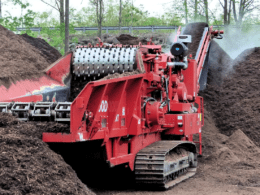Are you tired of spending endless hours preparing your garden for planting? Do you want a solution that will make your gardening and landscaping projects more efficient? Look no further than mastering the art of rototilling.
With this comprehensive guide, ‘Mastering Rototilling: A Guide to Efficient Gardening,’ you’ll learn everything you need to know about using a rototiller to make your gardening projects a breeze.
From safety precautions to the best times to use a rototiller, this guide covers it all. With easy-to-follow instructions for rototilling a garden and lawn, you’ll be able to save time and effort while achieving a successful garden and landscape.
Plus, with a focus on safety, you can rest assured that you’ll be able to tackle your projects with confidence and peace of mind.
Quick Takeaways
- Rototilling is a great tool for preparing soil for gardening and landscaping projects, but it’s important to know when to use it and when to avoid it.
- Safety precautions should always be taken when using a rototiller, including wearing appropriate gear and keeping children, pets, and tall weeds away from the area.
- When rototilling a garden or lawn, it’s important to test soil moisture, clear the area of rocks and debris, and make multiple passes at varying depths to properly incorporate organic material and prevent hard soil conditions.
- Owning a rototiller can save time and effort in maintaining and improving the landscape of a backyard.
What is Rototilling?
So, you want to know what rototilling is? Let’s dive in!
Simply put, rototilling is the process of breaking up and loosening soil using a rototiller. A rototiller is a machine with rotating blades that churn up the soil, making it easier to plant and grow crops.
The benefits of rototilling are numerous. By breaking up compacted soil, rototilling allows for better air circulation and water drainage, which can lead to healthier plant growth. Additionally, rototilling can help mix in organic matter such as compost or fertilizer, which can add valuable nutrients to the soil.
There are two main types of rototillers: gas-powered and electric-powered. Gas-powered rototillers are typically more powerful and better suited for larger areas, while electric-powered rototillers are more compact and better suited for smaller gardens.
Can I Use Pizza Boxes in My Compost for Gardening?
Composting pizza boxes for garden growth is a clever way to recycle them instead of throwing them away. The cardboard material of pizza boxes breaks down easily, providing carbon-rich organic matter for your compost. Just make sure to remove any grease or food residue before adding them to your compost pile.
When to Use a Rototiller
To determine when to use a rototiller, you should consider several factors. First, you need to ensure that the soil isn’t too wet or too dry. Wet soil can clump and make it difficult to till, while dry soil can cause the blades to bounce and not penetrate the soil properly.
Second, avoid using a rototiller on overgrown areas with tall weeds or grass. This can cause the blades to get tangled and damage the machine.
Third, if your garden soil doesn’t receive compost or fertilizer, it may be too hard to till. You may need to add organic material before rototilling.
Finally, if you’re unsure whether to use a rototiller, consider alternative methods such as using a pitchfork to loosen the soil or a hoe to remove weeds.
Despite these considerations, using a rototiller can provide significant benefits when gardening or landscaping. Rototilling can save time and effort by quickly preparing soil for planting and incorporating compost or fertilizer. It can also help with removing grassy areas and clearing lawn areas for garden expansion or landscaping.
However, it’s crucial to use a rototiller safely and effectively, as it can be a powerful tool that can cause injury if not used correctly. Always wear appropriate safety gear and keep children, pets, and tall weeds away from the area when using a rototiller.
By following these guidelines, you can ensure that your gardening and landscaping projects are efficient and safe.
Rototilling a Garden and Lawn
When preparing to rototill your garden or lawn, it’s important to start by clearing the area of any debris such as rocks, sticks, and leaves. This will help ensure that the rototiller can work efficiently and effectively, without running into any obstacles that could damage the machine or impact the quality of the soil.
Additionally, before starting to rototill, it’s crucial to test the moisture levels of the soil. If the soil is too dry, it may be difficult to break up and could damage the blades of the rototiller. On the other hand, if the soil is too wet, it may clump together and not break up evenly, leading to uneven soil quality.
Once you’ve cleared the area and tested the soil moisture, you can begin rototilling your garden or lawn. Start by adjusting the depth bar on your rototiller to about four or five inches deep. Then, slowly walk the rototiller in one direction over the area you wish to till.
It’s important to overlap the cutting area of the blades a couple of inches when starting a new row, to ensure that the soil is evenly tilled. Take breaks at short intervals to prevent over-working the rototiller motor and blades, and make sure to let the rototiller dig down deeper on each pass.
By following these steps and taking the necessary precautions, you can effectively prepare your soil for planting and ensure a successful gardening season.
Safety Precautions
Make sure that you are prepared to use a rototiller safely by wearing appropriate safety gear such as eye and hearing protection and heavy-duty gloves. It is important to prioritize safety when using a rototiller to avoid accidents and injuries. In addition to safety gear, it is recommended to keep children and pets away from the area and avoid running the rototiller close to shrubs or trees.
To help you visualize the necessary safety gear, here is a table of recommended items:
| Safety Gear | Recommended Brand | Link to Purchase |
|---|---|---|
| Eye Protection | DEWALT | https://www.amazon.com/DEWALT-DPG82-11C-Concealer-Anti-Fog-Safety/dp/B01A12J3GI |
| Hearing Protection | Howard Leight | https://www.amazon.com/Howard-Leight-Honeywell-Amplification-Electronic/dp/B007BGSI5U |
| Heavy-duty gloves | Vgo | https://www.amazon.com/Vgo-Synthetic-Leather-Working-Multi-Purpose/dp/B07N8WZJ6H |
For those with limited space or confined areas, a compact rototiller is a great option. It is easier to maneuver and can still get the job done efficiently. Just remember to still wear the appropriate safety gear and follow all safety precautions.
Frequently Asked Questions
Can a rototiller be used for anything other than gardening and landscaping projects?
Yes, a rototiller has versatility beyond gardening and landscaping projects. It can be used for alternative applications such as mixing soil for construction projects, leveling ground, and creating paths. However, safety precautions should always be taken.
Is it necessary to till the entire garden area or can specific sections be targeted?
When preparing your garden, targeted tilling can be effective. Only till areas where you plan to plant, leaving others untouched. Alternatives to tilling include using a garden fork to loosen soil or layering compost on top. Safety first!
Can a rototiller be used on rocky or uneven terrain?
Yes, a rototiller can be used on rocky or uneven terrain, but soil preparation is necessary. Remove large rocks and debris before using the rototiller. Adjust the depth bar to a shallow setting and make multiple passes for best results.
How often should a rototiller be serviced and maintained?
To ensure safe and efficient use of your rototiller, it’s important to keep up with regular maintenance. Experts recommend servicing your rototiller annually or after every 50 hours of use. Proper upkeep can prevent breakdowns and ensure your safety while using the machine.
Are there any alternatives to using a rototiller for preparing soil for planting?
Looking for an alternative to rototilling? Try no-till gardening or raised beds. These methods reduce soil compaction and preserve beneficial microorganisms. Plus, they’re safer and easier on your back.









